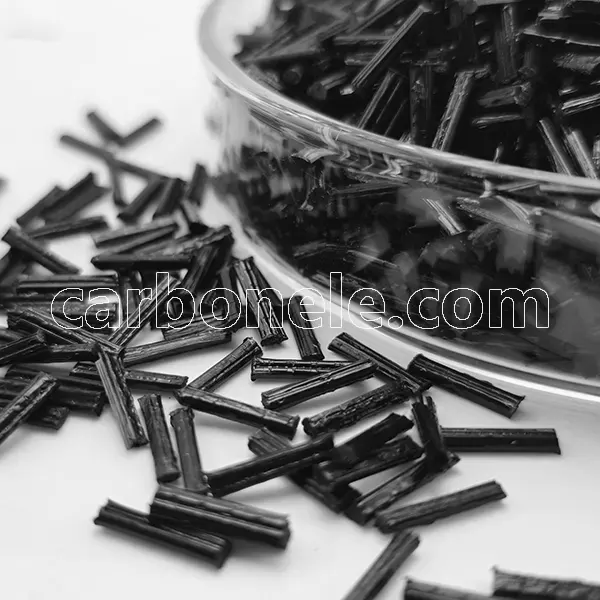What Factors Will Affect The Reinforcement Effects Of POM CF Composites? - Carbon Fiber Compounds Manufacturer | Supplier
Polyoxymethylene carbon fiber reinforced material (POM CF) has emerged as a key player, renowned for its exceptional blend of properties that make it invaluable across various industries. To fully harness the potential of POM CF, it is essential to understand the factors that influence its reinforcement effect.
As technological advancements continue to accelerate, the demand for materials with enhanced performance is increasing. POM-CF is particularly noteworthy because it combines the strength and rigidity of carbon fiber with the inherent characteristics of polyoxymethylene. Nevertheless, several critical factors can affect its reinforcement capabilities, warranting a thorough examination by engineers and researchers alike.
Factors Influencing the Reinforcement Effect of POM CF (Carbon Fiber Reinforced POM Raw Materials)
The reinforcement effect of polyoxymethylene (POM) reinforced with carbon fiber (CF) can be influenced by several key factors:
I. Carbon Fiber Content
1. Positive Correlation: The reinforcement effect improves with an increase in carbon fiber content. Higher content leads to a denser distribution within the POM matrix, forming more reinforcement networks that enhance the material’s strength, stiffness, and wear resistance. For instance, in aerospace applications where high strength is crucial, a greater carbon fiber content can ensure that components perform well under extreme conditions.
2. Optimal Levels: However, there is a limit to how much carbon fiber can be added. Excessive content can negatively impact processing performance due to the rigidity of the carbon fibers, reducing the material’s fluidity. This can lead to difficulties in molding, resulting in defects like incomplete fills and voids. Additionally, too much carbon fiber may decrease the toughness of the material, making it more susceptible to brittle fractures under impact.
II. Length and Diameter of Carbon Fiber
1. Length: The length of the carbon fibers plays a significant role in reinforcement. Longer fibers can create continuous reinforcement networks, allowing for more effective stress transmission during external forces. This is especially important in high-performance composites, where longer fibers are used to enhance mechanical properties for demanding applications.
2. Diameter: The diameter of the carbon fibers also impacts the reinforcement effect. Thinner fibers increase the contact area with the POM matrix, enhancing the interfacial bonding strength. Improved bonding allows for more efficient stress transfer, leading to better reinforcement. Moreover, thinner fibers can enhance the material’s toughness, helping it absorb energy during impacts and reducing fracture risk.
III. Interfacial Bonding Between Carbon Fiber and POM
1. Importance of Bonding: Effective interfacial bonding is crucial for optimal reinforcement. Poor bonding can hinder stress transfer, diminishing the reinforcement effect. For example, weak interfacial bonds can lead to delamination or debonding under lower stress conditions, compromising material performance.
2. Improvement Methods: Various methods can enhance interfacial bonding. Surface treatments, such as applying coupling agents to carbon fibers, can create a chemically bonded interfacial layer that strengthens the connection with the matrix. Additionally, optimizing processing techniques—such as increasing temperature and pressure—can promote better interaction and bonding between the carbon fibers and the matrix.
IV. Processing Technology
1. Influence of Methods: Different processing methods significantly affect the performance of CF-POM. Injection molding is common, and parameters like temperature, pressure, and speed directly influence the material’s microstructure and performance. High temperatures may degrade the POM matrix, while low temperatures can hinder material flow and fiber dispersion, both affecting reinforcement.
2. Extrusion Considerations: Extrusion molding is another prevalent method. Parameters such as screw rotation speed and extrusion temperature affect mixing and microstructure. Proper processing techniques ensure even dispersion of carbon fibers in the POM matrix, creating a robust reinforcement structure. In contrast, improper techniques can lead to fiber agglomeration and uneven distribution, reducing overall material performance.
V. Environmental Factors
1. Impact of Conditions: Environmental factors, including temperature and humidity, can affect the reinforcement effect of POM CF. High temperatures may soften the POM matrix, degrading its mechanical properties. Similarly, high humidity can cause moisture absorption, weakening the interfacial bonds between the carbon fiber and matrix.
2. Long-term Exposure Risks: Prolonged exposure to harsh conditions, such as UV radiation and chemical corrosion, can lead to material aging and performance degradation. While carbon fiber is resistant to corrosion, the POM matrix may suffer changes due to environmental influences. Therefore, selecting appropriate materials and protective measures for specific environments is crucial to maintain the reinforcement effect and longevity of POM CF materials.
Read more relevant articles about carbon fiber filled thermoplastics, please click here.
Previous News
How to Improve the Toughness of PA66 CF Composi...Next News
PA66 CF in Automotive Lightweighting
Feature Product
-
PA12 LCF30 for Drone Fuselages & Wings
What do you know about PA12 LCF30? PA12 ...
-
Competitive Price PA6 LCF30 Composites
What’s it? PA6 LCF30, which stands...
-
ABS CF10 Compound ABS 10%CF Thermoplastic Compo...
What’s ABS CF10? ABS CF10 refers t...









